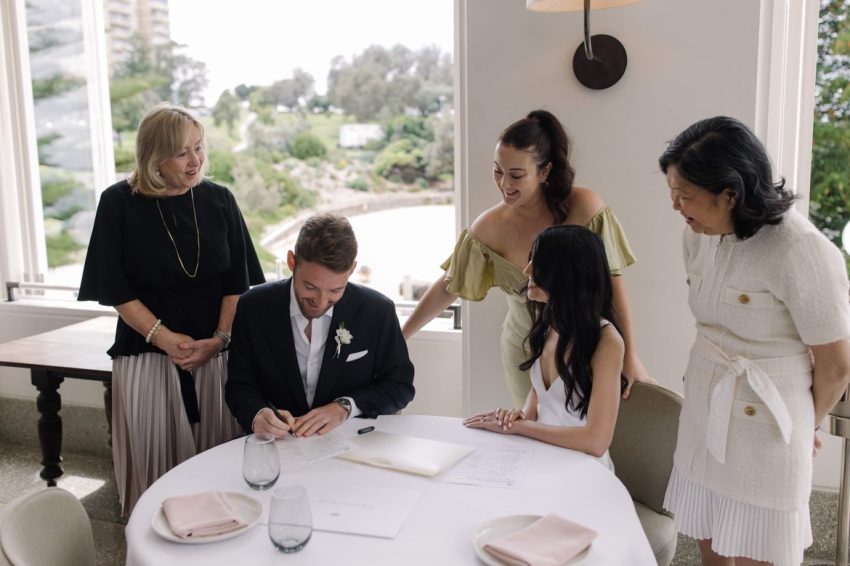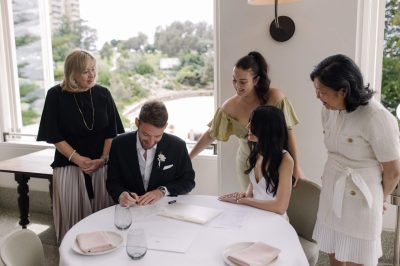For many of us, our trip down the aisle is one of our first real encounters with planning a wedding day and truly understanding everything that goes into it. You may have attended a few weddings in your time, but odds are you probably didn’t take in the small details, or tweaks to the traditional wedding ceremony, which seem to change and evolve in the wedding industry as time goes on.
As a marriage celebrant, I tend to see the stark differences between weddings I perform now, and even those from a few years ago. And as you can imagine, weddings 10 years ago were performed very differently to those we see now.
It’s not that tradition has been thrown to the wolves, but more that couples are wanting to showcase who they are, and more of their personality in the service. Adjustments have been made to make things flow a little easier, be more enticing for guests, and true to the lives of the people it’s supposed to be about – the couple!
Check out 6 TRADITIONAL wedding CEREMONY TRENDS that have received a major glow up in 2025:
What happened then:
Straight into the introduction and welcome.
What happens now:
Many couples now request a ‘welcome to country’ to kick off their ceremony. This is something they can ask their celebrant to organise, and is a really lovely way to pay your respects to the traditional custodians of the land in which the wedding ceremony is taking place.
What happened then:
Brides standing on the ‘left’ of the aisle
What happens now:
This tradition dates back to the Middle Ages, when grooms kept their sword-fighting right hand open for combat with those trying to rescue the bride, who was often kidnapped before the wedding. Now, obviously this is not as much of a concern these days, but the tradition has continued through the generations.
These days, your marriage celebrant will likely have a conversation about the side you prefer to stand on, and this will often come down to the bride’s (or groom’s) ‘good side’!
What happened then:
‘To honour and obey, for better or for poorer, in sickness and in health, as long as we both shall live’
What happens now:
Very, very rarely is this line included in vows these days. More often than not, the vows are kept to the minimum lines needed for legal validation of the marriage, followed by vows that the couple has written themselves.
What happened then:
Signing certificates at the end of the ceremony
What happens now:
In order to make a ceremony feel more cohesive, many celebrants take a pause in the ceremony to sign the marriage certificates before coming back to position to perform the declaration, and anything else left to perform. This means that once the ceremony concludes and everyone celebrates, the couple can spend all the time they like being congratulated by their guests, and not whisked away by the celebrant to sign paperwork!
What happened then:
Serious, meaningful ceremonies
What happens now:
While the majority of ceremonies are still entirely meaningful, you’ll find that many celebrants encourage a more jovial kind of ceremony, with laughs and moments that include the audience. Think, ‘witness bingo’, a game of ‘scissors, paper, rock’ to see who reads their vows first, and a love story that describes the couple with both serious and hilarious moments!
What happened then:
Dad walking the bride down the aisle
What happens now:
These days, many brides opt to ask their dad and mum to walk them down the aisle, as they feel both parents were equal in raising them, or they want to stick to the tradition of dad walking them down the aisle, but want to acknowledge the special bond they had with their mum, so ask her to join, too!
What happened then:
Family of the bride seated behind the bride, and family of the groom seated behind the groom.
What happens now:
Most couples ask their guests to ‘choose a seat, not a side’, and as a celebrant, I ensure that I advise the family of the groom to sit behind the bride, and the family of the bride to sit behind the groom. This is so that the groom’s mum and granny can see his face, and not the back of his head during the ceremony. Smart, eh?
// Written by Olivia Mackinnon





